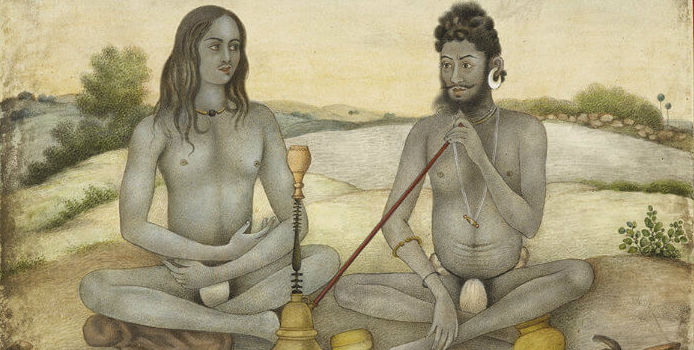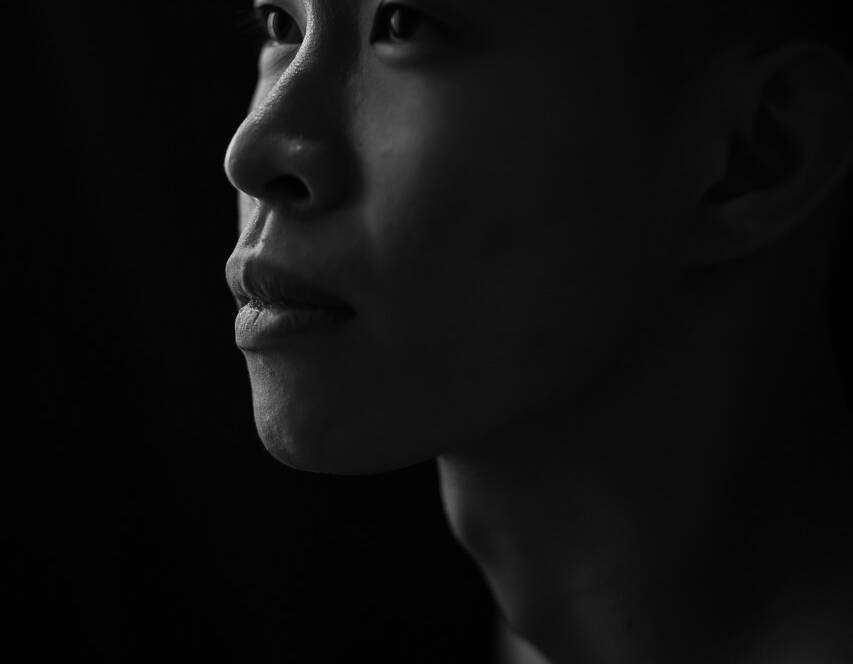In the previous article, we described the yugas or spiritual ages and the lokas or spiritual worlds. In the following article, we will mention the inhabitants of those ages and worlds. We will describe the subtle sheaths or layers and the chakras, through which we can reach liberation. The chakras are explored in great depth in the Esoteric Tantra course offered by Mahasiddha Yoga.
The Devas
The worlds are inhabited by various beings, ranging from the highest gods or Devas to the lowest animals. The manifestation of Spirit into matter ranges from the most translucent to the one which is so veiled that it seems to almost disappear in material covering. In reality, this is nothing but veiling, a process of illusion or maya.
The Devas are the “heavenly and shining ones” since they are high manifestations of Brahman, the Absolute. This includes the Trimurti – Brahma, the creator, Vishnu, the maintainer and Shiva Rudra, the destroyer of the universe. Devi represents the Great Mother Herself. This includes Kali, Sarasvati, Lakshmi, Gauri, Sandhya and others.
The term Devas also includes various lofty intelligences which intermediate between Ishvara (God, Brahman, Creator) and man. Deva, jiva and jara (inorganic matter) are illusory. Even worshippers of Devas may not know, their worship is in reality worship of Brahman itself.
Devas are of two classes: “unborn” or ajata and sadhya (who have evolved from the state of humanity, like in the case of the great god Indra, who was the King Nahusha). Opposed to the Devas are the Asuras, spirits who represent the tamasic and demonic elements in creation.
All Devas are subordinate to karma. The rendering of this term “Deva” as analogous to the term “God” has led to many misinterpretations of Hindu thought, but to use the word “angel” would also mislead. Though the world of the Devas has some analogy with the worlds of angels and angelic choirs, the Christian conception of these beings and their function excludes ideas which the Sanskrit texts and Scriptures include.
Other Beings
Pitris are considered to be fathers, ancestors addressed in prayer, together with the Devas. Rishis are seers who know and “see” all mantras. To the Rishis, the Vedas are revealed. The Scriptures speak about the Muni. What gives them this position is their thought, investigation and discussion, which marks an independent thinking mind, since no one who does not have an independent opinion can be called a Muni.
Human beings are incarnated souls called jiva, since they possess an ego which directs five organs of action and five organs of perception or senses. Human beings possess the fourfold mental self – manas, buddhi, ahamkara and chitta, the five vital airs or prana, the five elements, kama or desire, karma or law of action and reaction, and avidya or illusion.
When these illusory notions are destroyed, the one who wears these subtle garments attains nirvana and liberation from the cycle of death and rebirth.
The First Koshas or Subtle Sheaths
There are 5 subtle layers or sheaths, which are also named in the Sanskrit tradition as koshas. These are anna-maya kosha, prana-maya kosha, mano-maya kosha, vijñana-maya kosha, and ananda-maya kosha. These are the actual physical body, the energetic body, the mental body, the supramental body and the body of bliss.
All these layers of our body are considered to be materialisations of the eternal spirit into existence. Scriptures consider the first physical body, anna-maya kosha, to be the one in which;
“The Lord is self-conscious as a being, dark or fair, short or tall, old or youthful. In the energetic body, He feels alive, hungry, and thirsty. In the mental bodies, He thinks and understands. And in the body of Bliss, He resides in happiness.”
These 5 bodies are like the garment of the Lord, who is all-pervading.
Annamaya kosha, or the sheath of food, is the material, physical body, skin and bones, fluids and the digestive system. This sheath reigns over the elements of earth, water, and fire, which are residing in the lower chakras, muladhara, svadistana and manipura. It can be understood as a vehicle of our existence, which gives us the power to use it through two kinds of indriyas or senses. Jnanedriya or organs of sensation through which we know the external world (ears, skin, eyes, tongue, nose) and karmenindriyas or organs of action (mouth, arms, legs, anus, sexual organs, each with its function of speech, holding, walking, excretion and procreation).
The physical or gross body is also called sthula-sharira and is said to consist of three parts from the mother, namely: hair, blood, and flesh, and three parts from the father, namely: bone, muscle, and marrow.
Pranamaya kosha. The sheath of “breath” or prana, known under the name of prana-maya kosha, manifests itself in the air and ether, presiding in Anahata and Vishuddha chakra mainly. Prana is vayu, the universal force of activity, being very subtle, yet omnipresent, divided into the fivefold function. There are 10 vayus or airs, these inner vital forces, of which 5 are main: sapphire prana; apana, the silver; vyana, which is the colour of fire; udana, the ascending flow, and the milky samana.
The Outer Koshas
Mano-maya kosha & Vijñana-maya kosha
Mano-mayo kosha & vijñana mayo kosha constitute antahkarana, which is the totality of the mind being fourfold; buddhi and manas, ahamkara and chitta.
Manas registers automatically what it perceives through the senses. Buddhi, on attending such registrations, discriminates, determines and cognises the object perceived. Ahamkara is the ego. The function of chitta is contemplation, the faculty where the mind, for itself, raises the subject of its thought.
The antahkarana is the master of the ten senses, which are the outer doors through which it looks forth upon the external world. The centres of power inherent in the last two sheaths are Ajna and Sahasrara.
Anandamaya kosha
The subtle body comprises the ten indriyas, manas, ahamkara, buddhi, and the five functions of prana. The subtle body contains in itself the cause of rebirth into the gross body.
The atma or incarnated soul has three states of consciousness – jagrat, or waking state, svapna, or the dream state, and the third state of sushupti or dreamless sleep, when manas itself is withdrawn.
In the Sutras, the three modifications of avidya (ignorance or wrong knowledge which causes us to incarnate over and over again) are ignorance, egoism and happiness.
Chakras or Wheels of Energy
There are six chakras or dynamic centres in the body, namely: muladhara, svadhisthana, manipura, anahata, vishudda and ajna. Over all of them is the thousand-petaled lotus, which is called sahasrara-padma.
Muladhara is described as a red four petaled lotus, situated between the sexual organs and the anus. The tattva or element of this chakra is “earth”. In these four petals are seated the four forms of bliss: yogananda – yoga bliss, paramananda – supreme bliss, sahajananda – natural bliss and virananda – bliss of a hero. In the very centre is Svayambhu-linga, whose base is called the door of Brahman through which Devi ascends. Kundalini lies asleep, coiled like a serpent around the linga. A red fiery triangle surrounds svayambhu-linga, here is the seat of creative desire, outside of which is a yellow square, called prttvi mandala, to which is attached eight thunders. Muladhara is associated with the elephant.
Svadhistana chakra is a six-petalled lotus at the top of the sexual organs. Water evolved from fire is the tattva of this chakra. In the six petals are vritti (states, qualities, functions or inclinations). The white alligator or Makara is the symbol of this centre.
Manipura is a ten-petalled golden lotus, situated just below the navel. Fire, which evolved from air, is the tattva of this centre. Within it is the bija of fire and a triangular figure or mandala of Agni, the Lord of Fire.
Anahata chakra is a deep red lotus of twelve petals, situated in the region of the heart. Air evolved from Akasha is the tattva or element of this centre. A triangular mandala within the pericarp of this lotus is known as Trikona Shakti.
The Upper Chakras
Vishudda chakra is the abode of the Devi of speech. It is at the level of the throat (kantha-mula). The tattva of this chakra is ether. The lotus has sixteen petals and contains the amrita nectar of immortality. The Akasha mandala is transparent and round, and symbolised by a white elephant. Shiva is represented as white with five faces, three eyes, ten arms and dressed in tiger skin. Near him, Shakti Shakini is dressed in yellow garments.
Above Vishuddha chakra at the root of the palate (talumula) is a concealed chakra called Lalana, represented by a 12-petalled lotus, bearing the following vritti: faith, contentment, sense of error, self-command, anger, affection, sorrow or grief, dejection, purity, detachment, agitation, appetite or desire.
Ajna chakra is represented by a two-petalled lotus situated between the two eyebrows. In this chakra, there is no gross tattva, but the subtle tattva of the mind is here. Within the two petals are the three gunas – sattva, rajas and tamas.
Above the ajna chakra, there is a secret chakra named manas chakra, which is a lotus of six petals responsible for the faculties of hearing, touch, sight, smell, taste, and sleep. Above this is Soma chakra, a lotus of sixteen petals in connection with the 16 kalas, which are: compassion, patience, forgiveness, justice, impartiality, detachment, meditation and spiritual powers, invincibility, generosity, beauty, mastery of dance, mastery of music, honesty, truth, mastery of the arts, and control of all.
Sahasrara Padma
Above this last chakra is “the house without support”, where yogis see the radiant Ishvara. Above it, pranava shines like a flame.
Sahasrara Padma, or the thousand-petalled lotus, hangs with its head downwards. It represents the great sun both cosmically and individually. In each petal are placed all the letters of the alphabet, and whatever exists in the lower chakras or anywhere in the universe, also exists here in a potential state.
This article was written by Zita


